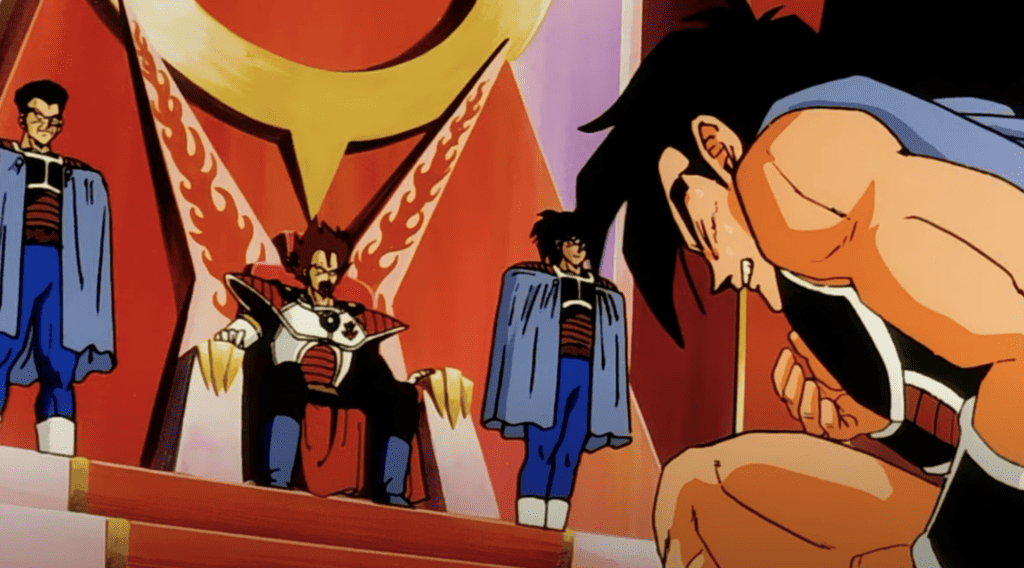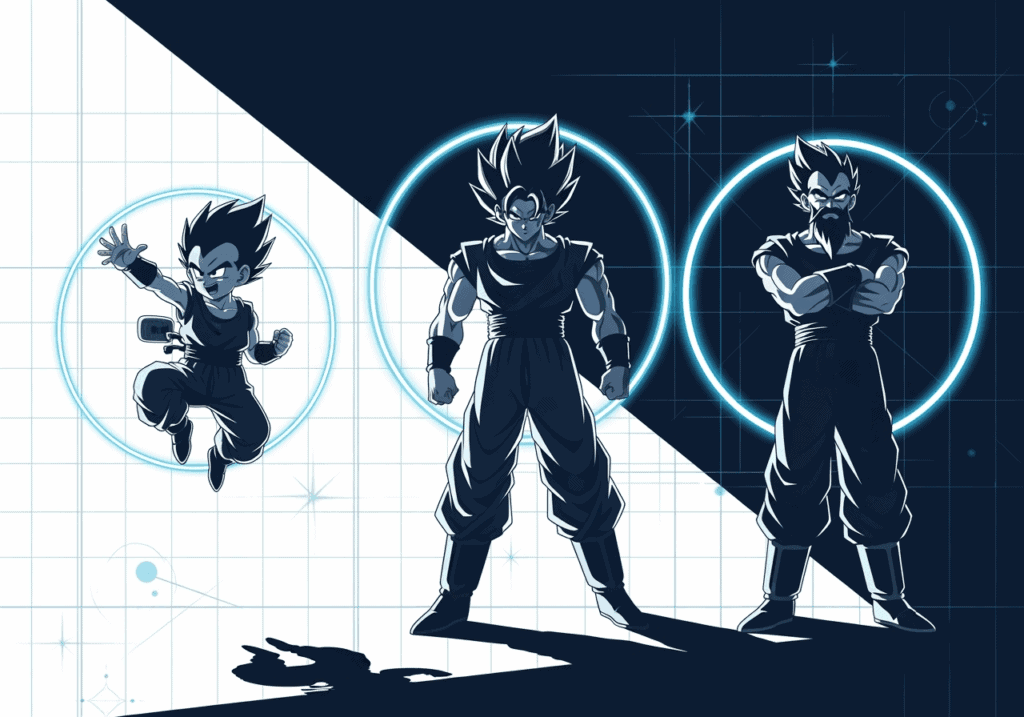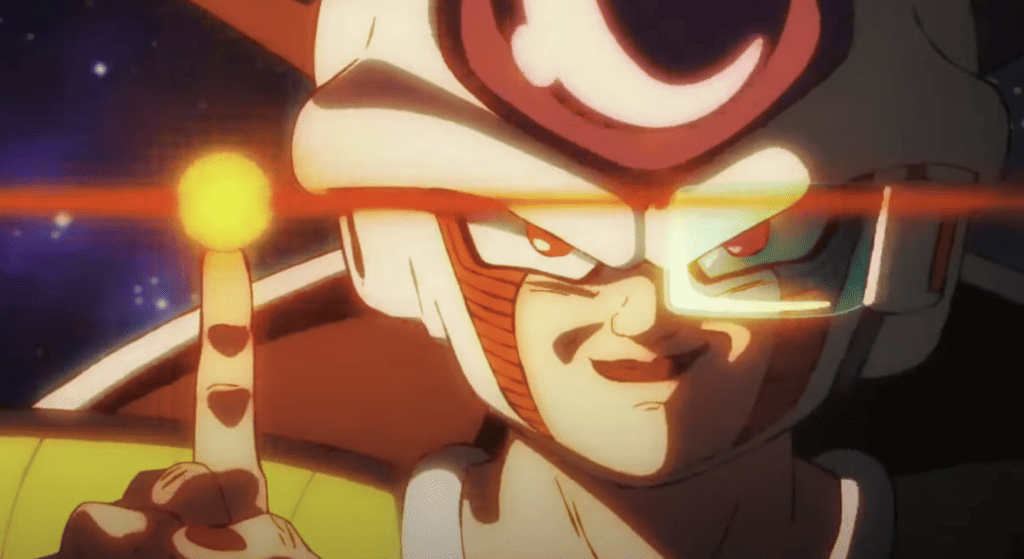When you’re immersed in the world of Dragon Ball Z, it’s impossible not to be captivated by the powerful and intriguing Saiyan race. As fans, we’ve followed their journey from ruthless conquerors to Earth’s greatest heroes – but have you ever stopped to really think about how Saiyan society functions?
For a warrior race that has managed to make such an impact on our favorite characters’ lives, there’s still so much left unexplored when it comes to understanding their hierarchy and way of life.
In this article, we’ll dive deep into the intricacies of Saiyan civilization – examining everything from family units and leadership structures, to social norms and expectations. We’ll also delve into what makes these seemingly unstoppable warriors tick – explaining why they’re driven by an insatiable appetite for battle, as well as dissecting key elements that set them apart from other species within the DBZ universe.
Whether you’re a long-time fan looking for fresh insights or just curious about these awe-inspiring beings, strap yourself in because we’re about to embark on a wild ride through Saiyan history!
The Warrior Caste System
Picture yourself standing on the desolate, rocky terrain of Planet Vegeta, surrounded by mighty warriors wearing their distinctive battle armor. The air is thick with tension and anticipation as these fearsome fighters prepare for yet another day of relentless warrior training.
Their muscles swell and veins bulge as they unleash powerful energy blasts, leaving scorched craters in their wake. You can feel the ground tremble beneath your feet from the sheer force of their clashes while sweat drips down your brow—an ominous reminder that you are amidst a society bound by an unbreakable caste system.
The Warrior Caste System in Saiyan society dictates each individual’s role from birth, limiting one’s potential based on genetic predispositions and societal expectations. Warrior training is designed to sharpen combat skills and instill loyalty to leaders within this hierarchy; however, caste limitations often prevent lower-ranked members from realizing their full capabilities or aspiring beyond predetermined roles.
This rigid structure reinforces social stratification among Saiyans, ensuring that only those who possess exceptional power—such as Prince Vegeta—are afforded opportunities for advancement and leadership positions.
Leadership And Royalty: Kings And Princes
Saiyan society is centered around a monarchy, with the highest-ranking members being King Vegeta and his son, Prince Vegeta. During King Vegeta’s rule, he was seen as a powerful leader who commanded respect from the entire Saiyan race. It wasn’t just his incredible strength that made him an effective ruler; it was also his strategic mind and ability to make difficult decisions for the greater good of his people.
Underneath these two key figures were several other high-ranking officials who played crucial roles in maintaining order within their civilization.
Prince Vegeta’s legacy has always been one of great pride and ambition. As a child prodigy, he quickly surpassed many adults in terms of raw power and skill. His dedication to becoming stronger provided inspiration not only to fellow Saiyans but to warriors throughout the universe.
Key aspects of this royal hierarchy include:
- The importance placed on combat prowess as a measure of worth.
- The role of elite soldiers – such as Bardock or Nappa – serving directly under royalty.
- A strict caste system based on birthright or social standing.
- The willingness to cooperate with external forces (such as Frieza) if it benefits their cause.
Although there are undoubtedly flaws in this hierarchical structure, its effectiveness cannot be denied when examining the success achieved by both King Vegeta and Prince Vegeta throughout their respective reigns. Despite facing numerous challenges along the way, they each managed to leave lasting impacts on not only their home planet but across other galaxies too – proving that strong leadership can make all the difference in achieving greatness against seemingly insurmountable odds, regardless of the obstacles and opposition encountered along the journey.
Their unwavering determination and visionary outlooks demonstrate that with the right guidance and perseverance, even the most far-reaching goals can be conquered, inspiring future generations to continue pushing the boundaries of what is possible.
Family Dynamics And Relationships
In the wake of understanding the significance of kings and princes in Saiyan society, one cannot help but wonder how family dynamics play a role within this powerful race. Delving deeper into the fabric that binds these warriors together, we shall explore their familial relationships and uncover whether traditional parental roles and sibling rivalries are present among them.
The truth is that while Saiyans may appear as cold-hearted fighters solely focused on combat prowess, they do exhibit strong emotional bonds with their families; albeit differently from what might be considered typical human behavior.
Parental roles tend to prioritize strength-building for offspring rather than nurturing or protection. For example, Goku’s father Bardock was shown to have been uninterested in his son until he displayed exceptional power levels. On the other hand, Vegeta takes pride in training his children Trunks and Bulla himself, proving that even amongst an elite warrior class like the Super Saiyans, there exists a semblance of paternal care.
As for sibling rivalries, Raditz’s relationship with Goku serves as an excellent example – initially driven by disdain towards Goku’s weakness before becoming more complex due to mutual respect gained through battle.
While it might not be overtly obvious at first glance, family connections hold significant importance for Saiyans across all social classes – from royalty down to low-ranking soldiers. Their unique perspectives on parenthood and sibling interactions provide us with yet another layer of depth to their culture beyond just brute force and martial abilities.
It is evident that despite being built upon ruthless traditions and brutal practices since ancient times, even the mighty Saiyan race cannot escape the innate pull towards forming meaningful familial bonds.
Battle-Driven Culture And Traditions
The battle-driven culture of the Saiyans is deeply rooted in their traditions and customs, as evidenced by various Saiyan rituals. The race’s fighting spirit and thirst for power are not only reflected in their everyday lives but also hold great importance during ceremonial events.
One such example is the ritualistic combat that takes place when a warrior wishes to advance through the ranks. In order to progress within the Saiyan hierarchy, warriors must prove themselves by defeating opponents of higher status.
Rank advancements play a crucial role in defining one’s position within this fierce society. As these promotions often lead to increased access to resources and more favorable treatment from other members of the community, it’s no surprise that they are highly sought after by ambitious individuals who wish to rise above their peers.
However, achieving them requires an immense amount of dedication, skill, and perhaps most importantly – strength -, which further solidifies how integral battling prowess is to Saiyan identity itself.
Comparisons With Other Species In The Dbz Universe
Imagine an epic battle between Goku, a Saiyan from the Dragon Ball Z universe, and Piccolo, a Namekian warrior. This clash of titans illustrates not only the power and abilities of two formidable species but also highlights some key differences that make each unique in their own right.
Comparing Saiyan society with other species in the DBZ universe can help us better understand their role within this world and how they have evolved over time.
- Saiyans are known for their aggressive nature and constant desire to improve through combat training; whereas, Namekians possess mystical abilities such as regeneration and telepathy.
- The Frieza Force employs numerous alien races like Ginyu Force or Appule’s race who serve under Frieza, a powerful tyrant ruling over many planets—although none hold positions as high up the hierarchy as the elite Saiyan warriors.
- Saiyan evolution has led to various forms like Super Saiyan transformations (Super Saiyan 1, 2, 3, etc.) driven by intense emotions and near-death experiences which provide them immense strength boosts beyond their normal capabilities compared to other species’ linear power levels.
- Interspecies alliances play a crucial role in shaping major events throughout the series—for example, Earthlings teaming up with Namekians against common enemies or Vegeta forming an alliance with Goku despite being rivals initially.
Given these comparisons and contrasts among different species in the DBZ universe, it becomes evident that while there may be similarities between certain aspects of societies or cultures shared across diverse races at times—their individual distinctions remain paramount when determining overall strengths and weaknesses on both personal and collective fronts.
Whether it is through evolving into more potent forms or forging strategic partnerships with unlikely allies—Saiyans continue to demonstrate flexibility in adapting to new challenges thrown their way—a testament to their resilience as one of the most prominent forces within this fantastical realm.
Frequently Asked Questions
How Do Saiyans Choose Their Mates, And Do They Practice Any Unique Rituals Or Customs During Courtship And Marriage?
When it comes to Saiyan Mating Criteria, these mighty warriors choose their partners based on strength and fighting prowess. As a race of fierce fighters in Dragon Ball Z, they are drawn towards potential mates who can hold their own in battle and contribute to the overall power of their progeny.
Courtship Traditions within the Saiyan culture aren’t as elaborate or romanticized as one might expect from more traditional societies. Instead, their customs often revolve around sparring matches or even full-blown battles that test each other’s mettle before deciding if they’re compatible for marriage.
This unique approach to courtship ensures that only the strongest pairings are formed among Saiyans, further reinforcing their relentless pursuit of ultimate power across generations.
Are There Any Non-Warrior Roles In Saiyan Society, Such As Artists, Scholars, Or Healers, And How Are They Treated Within The Hierarchy?
While Saiyan society primarily emphasizes the warrior class, there are indeed non-warrior roles such as artists and scholars who contribute to the community in their own ways.
For instance, Saiyan craftsmanship can be seen in their advanced technology used for battle gear and space travel. Additionally, during times of peace or Saiyan leisure, individuals may engage in activities like cooking, storytelling, or honing other unique skills that enrich their culture outside of combat prowess.
However, it’s worth noting that these non-warrior roles do not hold as much prestige within the hierarchy, often being overshadowed by those with exceptional fighting abilities.
Despite this disparity in status, these lesser-known professions remain crucial elements of a well-rounded Saiyan society.
How Do Saiyans Handle Disputes Or Conflicts Within Their Society, And Is There A System Of Law And Order In Place To Maintain Social Harmony?
In the context of Saiyan conflict resolution, disputes are often settled through physical combat or power demonstrations due to their warrior-centric nature.
While there is no explicit legal system structure in place within the society as seen in Dragon Ball Z, strength and battle prowess dictate one’s standing and influence among fellow Saiyans.
This approach to resolving conflicts ensures that social harmony is maintained through a clear hierarchy based on martial abilities rather than complex laws and regulations.
However, it should be noted that this method may not necessarily foster fairness or justice for all members of the community.
Are There Any Significant Religious Or Spiritual Beliefs Within Saiyan Culture, And How Do These Beliefs Influence Their Way Of Life And Values?
Peering into the heart of Saiyan spirituality is like trying to catch a glimpse of a shooting star – it’s elusive, but captivating once you see it.
Despite their warrior-centric culture and focus on physical prowess in Dragon Ball Z, Saiyans do possess some cultural beliefs that hint at deeper spiritual connections.
Although not explicitly religious, these values emphasize camaraderie, loyalty, and personal growth as essential aspects for every Saiyan.
This sense of honor and self-improvement echoes throughout their daily life, pushing them to constantly strive for greater power while maintaining close-knit relationships with fellow warriors.
In essence, Saiyan spirituality reveals itself through their relentless pursuit of strength fused with an unwavering dedication to those they hold dear.
What Is The Role Of Education In Saiyan Society, And How Are Young Saiyans Trained And Prepared For Their Eventual Roles Within The Hierarchy?
In Saiyan society, education plays a vital role in preparing young warriors for their eventual positions within the hierarchy.
Saiyan education methods primarily focus on combat training and physical development from an early age, as strength and fighting prowess are highly valued attributes among their people.
Hierarchy influences both the intensity of this training and the expectations placed upon each individual; those born into higher-ranking families or displaying exceptional abilities may receive more rigorous instruction in order to maximize their potential.
Despite its martial emphasis, Saiyan education also imparts important cultural values such as loyalty, courage, and determination – qualities that serve them well in battle and reinforce their place within the larger societal structure.
Conclusion
In conclusion, the Saiyan society in Dragon Ball Z is a fascinating and complex culture that values strength and honor above all else.
Despite their warrior-focused hierarchy, it’s intriguing to consider the potential for non-warrior roles and how they might contribute to this unique civilization.
As an expert on the subject, I find it particularly interesting that only about 10% of Saiyans ever achieve Super Saiyan status—a testament to the immense dedication required to excel within their ranks.
This further highlights the importance of their cultural practices in shaping young warriors for success.


